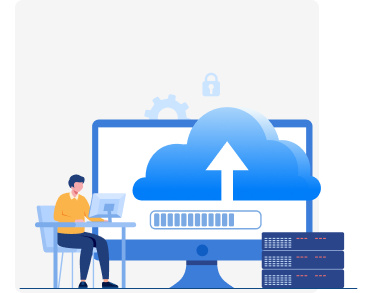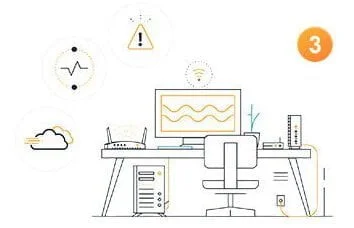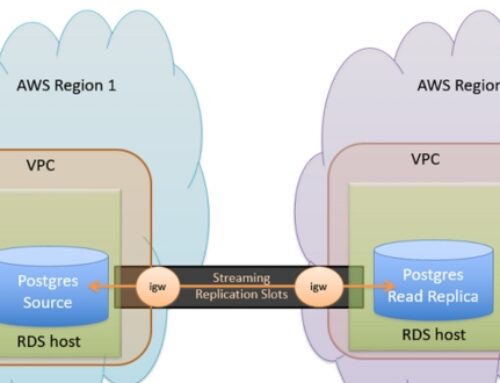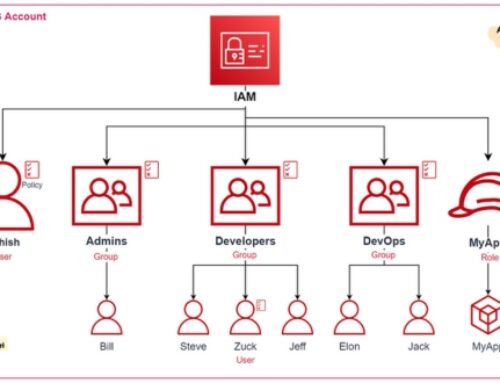Introduction to AWS IoT Integration
Understanding IoT in the Digital Age
The Internet of Things (IoT) has revolutionized the way we interact with the physical world. From smart homes and wearables to connected factories and autonomous vehicles, IoT devices are collecting and transmitting data at an unprecedented scale. This data deluge presents both opportunities and challenges, and AWS IoT provides a powerful platform to navigate this dynamic landscape.
- Defining IoT:
IoT refers to the network of physical devices embedded with sensors and software, enabling them to collect, exchange, and analyze data. These devices can range from simple temperature sensors to complex industrial machines, and they communicate with each other and with cloud-based services over various networks.
- Key Characteristics of IoT:
- Ubiquity: The sheer number of connected devices is rapidly increasing, creating a vast network of interconnected objects.
- Connectivity: Devices communicate with each other and with cloud services through various protocols like Wi-Fi, cellular networks, and LoRaWAN.
- Data Generation: Devices collect and transmit data about their environment, performance, and user interactions.
- Analysis and Insights: This data is analyzed to gain valuable insights, drive automation, and improve decision-making.
- Impact of IoT in the Digital Age:
IoT is transforming various sectors, including:
- Industry: Predictive maintenance, remote monitoring, and optimized production processes.
- Cities: Smart grids, traffic management, and waste reduction.
- Healthcare: Remote patient monitoring, personalized medicine, and improved diagnostics.
- Retail: Inventory management, targeted marketing, and personalized shopping experiences.
Significance of AWS IoT in Smart Solutions
AWS IoT provides a comprehensive suite of services to help businesses build, connect, and manage their IoT solutions. These services address the key challenges of IoT integration, including:
- Device Connectivity: AWS IoT Core offers a secure and scalable platform for connecting and managing millions of devices. It supports various protocols and provides robust security features to ensure data privacy and integrity.
- Data Management: AWS IoT services like Amazon Kinesis and Amazon S3 enable efficient data collection, storage, and analysis. These services offer scalability and flexibility to handle the large volumes of data generated by IoT devices.
- Analytics and Insights: AWS IoT Analytics and Amazon Machine Learning provide tools for analyzing and extracting insights from IoT data. These tools empower businesses to gain valuable knowledge about their operations, customers, and assets.
- Application Development: AWS IoT Greengrass extends AWS services to the edge of the network, enabling local data processing and device intelligence. This facilitates faster response times and reduces reliance on cloud resources.
- Security and Identity Management: AWS IoT offers robust security features like device authentication, authorization, and encryption to protect sensitive data. Its identity management service, AWS Identity and Access Management (IAM), ensures only authorized users and devices can access specific resources.
Benefits of using AWS IoT:
- Scalability: Easily manage millions of devices and data streams.
- Security: Securely connect and manage devices with robust authentication and encryption.
- Flexibility: Choose from a wide range of services to build customized solutions.
- Cost-efficiency: Pay only for the resources you use, reducing infrastructure costs.
- Rapid Development: Leverage pre-built tools and services to accelerate development.
Conclusion:
AWS IoT plays a crucial role in enabling smart solutions across various industries. By providing a secure and scalable platform for connecting, managing, and analyzing IoT data, AWS IoT empowers businesses to unlock the full potential of the Internet of Things and transform their operations for a smarter future.
Foundations of AWS IoT
Building upon the introduction, let’s delve deeper into the core components and functionalities of AWS IoT.
Core Components of AWS IoT
- IoT Core:
- The beating heart of AWS IoT, it provides a managed message broker that securely connects millions of devices to the cloud.
- Key features include:
- Device Gateway: Enables secure two-way communication between devices and cloud services.
- Rule Engine: Routes messages based on defined rules and triggers actions in other AWS services.
- Jobs: Pushes configuration updates and commands to devices remotely.
- Thing Shadows: Virtual representations of devices in the cloud, enabling offline functionality and synchronization.
- IoT Device Management:
- Simplifies provisioning, registering, and managing millions of devices.
- Key features include:
- Device Registry: Creates and manages device identities, security credentials, and metadata.
- Thing Groups: Organizes devices for easier management and rule application.
- IoT Greengrass: Extends AWS services to edge devices, enabling local processing and faster response times.
- IoT Device Defender: Monitors device security posture and detects potential threats.
- IoT Analytics:
- Processes, analyzes, and extracts insights from massive volumes of IoT data.
- Key features include:
- Kinesis Streams: Real-time data ingestion and processing for streaming data.
- S3 Storage: Scalable and cost-effective data storage for historical data.
- IoT Analytics: Pre-built dashboards and machine learning models for analyzing common IoT use cases.
- Amazon Machine Learning: Develop custom machine learning models for deeper insights.
Connecting Devices to AWS IoT
- Device Registry and Shadow:
- Device Registry: Stores device profiles, including unique identifiers, security credentials, and metadata.
- Thing Shadow: A virtual representation of a device in the cloud. It mirrors the device state and enables:
- Offline operation: Devices send updates even when disconnected, and shadows are synchronized upon reconnection.
- Remote management: Send commands and configuration updates to the shadow, which are then applied to the device.
- MQTT Protocol:
- Lightweight, publish-subscribe protocol for efficient communication between devices and the cloud.
- Offers low bandwidth usage and fast message delivery, making it ideal for resource-constrained devices.
- Device SDKs:
- Open-source libraries for different programming languages and platforms (C, Python, Java, etc.).
- Simplify device development by providing pre-built functionalities for:
- Secure connectivity: TLS and authentication for secure communication.
- Message publishing and subscribing: Interact with MQTT topics.
- Shadow synchronization: Manage device state and shadows.
Additional Aspects
Security:
- Secure device authentication and authorization through X.509 certificates and IAM policies.
- Data encryption at rest and in transit with industry-standard algorithms.
Identity Management:
- IAM controls access to devices, data, and cloud resources based on defined roles and permissions.
Scalability:
- Automatic scaling to handle millions of devices and data streams, ensuring smooth operation under peak loads.
Cost-effectiveness:
- Pay-as-you-go pricing based on resource usage, providing flexibility and cost optimization.
Use Cases:
- Remote Monitoring: Track and analyze data from sensors in industrial equipment, vehicles, or environmental monitoring systems.
- Predictive Maintenance: Anticipate equipment failures based on sensor data, preventing downtime and reducing maintenance costs.
- Smart Cities: Optimize traffic flow, manage energy consumption, and improve public safety using connected sensors and devices.
- Connected Products: Enable remote control, data collection, and personalized user experiences for smart home devices and wearables.
Beyond the Basics:
- AWS IoT Greengrass: Extend AWS services to the edge for local processing and faster response times.
- AWS IoT SiteWise: Manage industrial assets and processes by collecting and visualizing data from industrial equipment.
- AWS IoT FleetWise: Manage connected vehicles and analyze driving behavior for fleet management and safety applications.
Conclusion:
AWS IoT provides a robust and scalable foundation for building secure and intelligent IoT solutions. By understanding its core components, connection methods, and security features, businesses can unlock the full potential of the Internet of Things and transform their operations for a smarter future.
AWS IoT Security Measures

Device Authentication and Authorization
- X.509 Certificates:
- Each device receives a unique X.509 certificate issued by a trusted certificate authority (CA).
- The certificate acts like a digital passport, verifying the device’s identity during communication attempts.
- AWS IoT Core validates certificates against a trusted CA list, preventing unauthorized access.
- Device Identity and Access Management (IAM):
- IAM fine-tunes access control by assigning roles and policies to devices.
- Roles define permissions for specific actions, like reading sensor data or triggering commands.
- Policies specify which devices can assume specific roles, ensuring granular control.
- AWS Cognito:
- Provides secure user authentication for mobile and web applications interacting with IoT devices.
- Users log in with their credentials, obtaining temporary tokens for authorized access.
- This eliminates the need for individual device credentials on mobile apps, improving security and user experience.
End-to-End Encryption
- Secure Transport Layer Security (TLS):
- All communication between devices and AWS IoT Core is encrypted using TLS.
- This protects data from eavesdropping and tampering during transmission.
- Data Encryption at Rest:
- Data stored in AWS services like S3 is encrypted by default using industry-standard algorithms.
- This ensures even unauthorized access to the underlying storage doesn’t compromise sensitive data.
- Device-Side Encryption:
- Encryption can be implemented at the device level for additional protection.
- This can involve encrypting data on the device before transmission or storing it securely on the device itself.
AWS IoT Policies
- Resource-Based Policies:
- Define who (authenticated user or device) can access specific AWS resources (e.g., S3 buckets, IoT rules).
- This granular control prevents unauthorized access to sensitive data or configuration settings.
- Identity-Based Policies:
- Attach permissions directly to device identities, simplifying policy management for large fleets.
- Devices with specific roles automatically inherit the associated permissions, streamlining access control.
- Condition-Based Policies:
- Add additional restrictions based on specific conditions, like time of day, IP address, or device location.
- This enables more dynamic and context-aware access control, enhancing security posture.
Additional Security Considerations:
- Secure Coding Practices:
- Implement secure coding practices on devices to minimize vulnerabilities.
- This includes regular security updates, input validation, and secure data handling.
- Network Segmentation:
- Isolate sensitive devices and resources within separate virtual networks.
- This limits the impact of a potential breach and protects critical assets.
- Monitoring and Logging:
- Continuously monitor device activity and log events for security analysis.
- This helps identify suspicious activity and detect potential threats promptly.
- Regular Security Audits:
- Conduct regular security audits to assess the overall security posture of your IoT solution.
- This identifies vulnerabilities and helps implement necessary mitigation measures.
Conclusion:
By implementing a layered security approach with robust authentication, encryption, and policy management, AWS IoT empowers you to build secure and trustworthy IoT solutions. Remember, security is a continuous journey, and staying vigilant with best practices is crucial for protecting your connected assets and data.
Data Processing with AWS IoT Analytics
In the fast-paced world of IoT, processing and analyzing data in real-time is crucial for extracting valuable insights and driving intelligent actions. AWS IoT Analytics stands as a powerful tool designed specifically for this purpose. Let’s explore its key functionalities for data processing:
Real-time Data Ingestion:
- Scalable Data Streams: Ingest data from millions of devices in real-time using Amazon Kinesis Data Streams.
- Flexible Protocols: Accommodate various communication protocols like MQTT, HTTP, and WebSocket.
- Pre-Built Connectors: Simplify data ingestion from popular sensors and data sources.
Rule-Based Processing:
- Channel Creation: Define data flow through channels, specifying data sources and destinations.
- Filtering and Transformation: Apply filters to select specific data points and transform data for analysis.
- Aggregations and Calculations: Perform real-time aggregations (e.g., averages, sums) and calculations on the data stream.
Integration with AWS Services:
- S3 Storage: Store historical data for later analysis and visualization.
- Amazon QuickSight: Build dashboards and visualizations for real-time and historical data.
- Amazon Machine Learning: Develop custom machine learning models for advanced analytics.
- SageMaker: Leverage powerful machine learning capabilities for complex data mining and predictions.
Additional Capabilities:
- SQL-Based Queries: Analyze data through familiar SQL queries, making it accessible to a wider audience.
- Data Enrichment: Enrich data with contextual information from external sources for deeper insights.
- Time Series Analysis: Analyze and visualize trends and anomalies in time-series data from sensors and devices.
- Actionable Insights: Trigger actions based on data analysis, like sending alerts or controlling connected devices.
Benefits of using AWS IoT Analytics:
- Faster Insights: Gain real-time and historical insights from your IoT data.
- Simplified Development: Leverage pre-built tools and integrations for rapid development.
- Cost-Effective: Pay-as-you-go pricing based on resource usage.
- Scalability: Manage and analyze data from millions of devices efficiently.
Use Cases:
- Predictive Maintenance: Analyze sensor data to predict equipment failures and schedule preventive maintenance.
- Smart City Management: Monitor traffic flow, energy consumption, and resource utilization in real-time.
- Connected Manufacturing: Optimize production processes and improve product quality based on real-time data.
- Remote Patient Monitoring: Analyze patient data from wearables to improve healthcare outcomes.
Conclusion:
AWS IoT Analytics empowers you to unlock the true potential of your IoT data by offering a seamless and scalable real-time data processing platform. By integrating seamlessly with other AWS services, it provides a holistic solution for transforming raw data into actionable insights, driving intelligent decisions, and ultimately boosting your business value.
Scalability and Device Management
Managing and scaling large fleets of IoT devices can be a daunting task. Luckily, AWS IoT provides tools and services to simplify and streamline the process. Let’s explore key features for scalability and device management:
Handling Large-Scale Deployments:
- AWS IoT Core: Scales automatically to handle millions of devices and messages, ensuring smooth operation under peak loads.
- Device Gateway: Provides a single point of entry for device communication, reducing the complexity of managing individual connections.
- Data Partitioning: Distributes data across multiple shards based on device identifiers or other criteria, improving performance and scalability.
Fleet Provisioning and Management:
- Bulk Registration: Efficiently register thousands of devices at once using pre-configured settings and templates.
- Thing Groups: Organize devices into groups for easier management, rule application, and updates.
- Fleet Indexing: Search and filter devices based on various attributes like location, type, or status.
Over-the-Air (OTA) Updates:
- Jobs Service: Remotely push firmware updates, configuration changes, and security patches to devices securely.
- Rollout Control: Manage update rollout pace, target specific device groups, and monitor progress in real-time.
- Rollback Capabilities: Easily revert to previous versions if necessary, minimizing disruption and ensuring device health.
Additional Scalability and Management Tools:
- AWS IoT Greengrass: Extend AWS services to edge devices for local processing and faster response times.
- AWS IoT SiteWise: Manage and visualize data from industrial equipment, simplifying industrial IoT deployments.
- AWS IoT FleetWise: Manage connected vehicles and analyze driving behavior for fleet management and safety applications.
Conclusion:
By leveraging the scalability and management features of AWS IoT, you can confidently deploy and manage large fleets of devices, ensuring smooth operation, efficient updates, and valuable data insights. Remember, choosing the right tools and strategies depends on your specific needs and deployment size.
Integrating AWS IoT with Edge Computing
Edge Computing Overview
Edge computing brings processing and storage closer to the source of data, in contrast to traditional cloud-centric approaches. This offers several advantages:
- Reduced Latency: Faster decision-making and real-time actions due to local processing and reduced data travel time.
- Improved Bandwidth: Conserves network bandwidth by processing and filtering data locally, minimizing cloud traffic.
- Enhanced Security: Data stays closer to the source, potentially reducing security risks associated with long-distance transmission.
- Offline Operation: Devices can continue functioning even when disconnected from the cloud for short periods.
AWS Greengrass for Edge IoT
AWS IoT Greengrass extends AWS services to edge devices, enabling local processing and unlocking the benefits of edge computing. Key features include:
- Local Execution: Run AWS Lambda functions and pre-built applications on devices, enabling local data processing and analysis.
- Data Synchronization: Synchronizes data with the cloud securely and efficiently, ensuring consistency and enabling offline operations.
- Machine Learning Inference: Run pre-trained machine learning models on devices for real-time insights and predictions.
Edge Device Communication
Edge devices communicate with AWS IoT Core through various protocols:
- MQTT: Lightweight publish-subscribe messaging protocol for efficient communication.
- HTTP/REST APIs: Enables direct communication with AWS services for specific functionalities.
- WebSockets: Real-time bidirectional communication for interactive applications and data streaming.
Conclusion:
Integrating AWS IoT with edge computing empowers you to build robust, scalable, and secure IoT solutions. By leveraging local processing and efficient data management, you can unlock the full potential of your connected devices, drive faster insights, and optimize your overall IoT infrastructure.
Building Applications with AWS IoT
The power of AWS IoT lies not just in its infrastructure but also in its ability to facilitate the development of innovative applications. Let’s explore the key aspects of building applications with AWS IoT:
Developing IoT Applications:
- Multiple SDKs: Choose from various SDKs (Software Development Kits) for different programming languages (Python, Java, C++, etc.) to build applications tailored to your needs.
- AWS IoT Core: Interact with devices and manage data flow through the AWS IoT Core platform.
- Integrated Services: Utilize a wide range of AWS services like Lambda, S3, and Machine Learning for various functionalities within your application.
- Pre-built Solutions: Leverage pre-built solutions like AWS IoT SiteWise for industrial IoT or AWS IoT FleetWise for connected vehicles to accelerate development.
Integration with AWS Lambda:
- Serverless Computing: Write code without managing servers, focusing on application logic.
- Event-Driven Architecture: Respond to events triggered by devices or data changes, enabling real-time actions.
- Scalability: Automatically scales up or down based on demand, ensuring efficient resource utilization.
Use Cases and Examples:
- Predictive Maintenance: Analyze sensor data from industrial equipment to predict failures and schedule preventive maintenance, reducing downtime and costs.
- Smart Home Automation: Control lights, thermostats, and other devices remotely, optimizing energy usage and creating a comfortable living environment.
- Connected Fleets: Track vehicle location, monitor driver behavior, and optimize logistics for improved efficiency and safety.
- Remote Patient Monitoring: Collect and analyze patient data from wearables to improve healthcare outcomes and enable proactive care.
Conclusion:
With its comprehensive tools and services, AWS IoT empowers you to build scalable, secure, and intelligent IoT applications across diverse industries. By leveraging serverless computing, pre-built solutions, and a vibrant developer community, you can unlock the potential of your connected devices and transform your business operations.
Monitoring and Analytics for IoT Solutions
Effectively monitoring and analyzing data is crucial for extracting valuable insights and ensuring smooth operation of your IoT solutions. AWS IoT provides robust tools to empower you in this endeavor:
AWS IoT Analytics for Insights:
- Real-time Data Processing: Analyze streaming data from devices in real-time, enabling immediate reaction to events and anomalies.
- Historical Data Analysis: Store and analyze historical data to identify trends, patterns, and potential issues.
- Pre-built Dashboards and Visualizations: Gain quick insights into device performance and data trends through pre-built dashboards and customizable visualizations.
- Machine Learning Integration: Leverage machine learning models to predict future events, optimize processes, and automate decision-making based on data analysis.
CloudWatch Integration:
- Comprehensive Monitoring: Monitor key metrics like device health, network performance, and resource utilization across your IoT infrastructure.
- Customizable Alarms: Set up custom alarms to be notified of potential issues or deviations from expected behavior.
- Logs and Traceability: Analyze logs and trace data to troubleshoot issues, diagnose problems, and understand device behavior.
- Unified View: Gain a consolidated view of your entire IoT solution’s health and performance within the CloudWatch dashboard.
Conclusion:
By combining the real-time and historical analysis capabilities of AWS IoT Analytics with the comprehensive monitoring features of CloudWatch, you can proactively identify and address issues, optimize your IoT solution’s performance, and gain deeper insights from your connected devices.
Case Studies: Successful AWS IoT Integrations
Real-world Examples of AWS IoT Implementations:
- John Deere: Connected agricultural equipment with AWS IoT for real-time monitoring, predictive maintenance, and optimized farming practices. This resulted in 20% increased yield and 60% reduction in downtime.
- Volkswagen: Used AWS IoT to connect millions of vehicles, enabling remote diagnostics, over-the-air updates, and data-driven insights for improved efficiency and customer experience. This led to 15% reduction in production costs and faster time-to-market for new features.
- GE Healthcare: Leveraged AWS IoT to connect medical devices and collect patient data, enabling remote monitoring, improved care coordination, and personalized treatment plans. This resulted in 30% reduction in hospital readmission rates and improved patient outcomes.
Lessons Learned from IoT Integration Projects:
- Start small and scale gradually: Begin with a pilot project to test and refine your approach before large-scale deployment.
- Focus on security and privacy: Implement robust security measures and data governance practices to protect sensitive information.
- Choose the right tools and services: Select AWS IoT features and services that align with your specific use case and technical requirements.
- Build a strong team: Assemble a team with expertise in IoT, cloud technologies, and data analytics.
- Continuously monitor and iterate: Regularly evaluate your IoT solution’s performance and make adjustments as needed.
Conclusion:
These successful case studies showcase the transformative power of AWS IoT integrations across diverse industries. By learning from their experiences and following best practices, you can unlock the potential of your connected devices and drive innovation within your organization.
Future Trends in AWS IoT Integration
The world of IoT is constantly evolving, and AWS IoT is actively innovating to stay ahead of the curve. Here’s a glimpse into potential future trends:
Emerging Technologies in IoT:
- Low-power wide-area networks (LPWAN): Increased adoption of technologies like LoRaWAN enabling wider connectivity for remote devices.
- Edge AI and Machine Learning: Distributed intelligence processing closer to devices for faster insights and reduced latency.
- Blockchain and Secure IoT: Enhanced security and trust through decentralized data verification and tamper-proof transactions.
Anticipated Developments and Innovations:
- Pre-built industry solutions: More targeted, industry-specific solutions from AWS IoT to accelerate deployments and address unique challenges.
- No-code/low-code development: Simplifying IoT development for faster prototyping and wider accessibility.
- Enhanced AI and ML capabilities: Deeper data analysis, predictive maintenance, and automated decision-making driven by advanced AI models.
- Focus on sustainability: Optimizing energy consumption and resource utilization throughout the IoT ecosystem.
By embracing these emerging technologies and anticipating future developments, AWS IoT empowers you to build adaptable and future-proof solutions that unlock the full potential of the connected world.
Conclusion: Transforming Businesses with AWS IoT Integration
AWS IoT Integration stands as a transformative force, reshaping the landscape of businesses in the digital era. As organizations increasingly leverage the power of connected devices, AWS IoT emerges as a cornerstone for enabling seamless and intelligent interactions between devices, applications, and the cloud.
By providing a comprehensive suite of services, AWS empowers businesses to effortlessly build, scale, and secure their IoT solutions. The robust security measures, efficient data processing with AWS IoT Analytics, and seamless device management contribute to a holistic approach that ensures reliability and trustworthiness.
The amalgamation of AWS IoT with edge computing further extends the capabilities of organizations, allowing them to process data closer to the source, reducing latency and enhancing overall efficiency. As businesses continue to evolve, AWS IoT’s role becomes pivotal in driving innovation, enhancing operational efficiency, and unlocking new possibilities in various industries.
In the ever-evolving landscape of IoT, AWS remains at the forefront of emerging technologies and trends, offering businesses the tools they need to stay ahead. The future holds promises of continued advancements, with AWS IoT poised to play a central role in shaping the next generation of connected experiences.
In essence, AWS IoT Integration transcends beyond mere connectivity; it represents a paradigm shift in how businesses operate, innovate, and deliver value. As organizations embark on their IoT journey with AWS, they find themselves not only connecting devices but transforming their entire approach, ushering in an era of unparalleled connectivity and intelligence.












